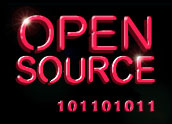
We may not see or hear much about open source in the latest cloud or Big Data offerings, but it’s playing a significant role in the most disruptive trends in enterprise IT.
Just as we’ve seen with open source in cloud computing, it is an integral part of trends that currently are disrupting consumer and enterprise IT markets, including hybrid cloud computing, automation and DevOps, and Big Data.
The conclusions of research conducted three years ago on the role of open-source software in cloud computing still hold true today.
Most of the infrastructure components underlying cloud computing environments are open source software, including Linux, KVM, and Xen hypervisors; application servers such as Red Hat’s JBoss and Apache Tomcat; Web servers such as Apache or Nginx; databases such as MySQL, PostgreSQL, and the NoSQL ones; and a myriad of open source languages, frameworks, and other tools.
Given its prominence in cloud computing, open-source software is burrowing deeper and spreading wider in enterprise IT as large enterprises put more of their infrastructure, operations, application development, and deployment in the cloud.
Growth Projections
Explosive growth is ahead for enterprise cloud computing projects, indicates the most recent research from TheInfoPro, a service of 451 Research. At one level, the cloud computing market can still justifiably be considered immature. At another level, it can be expected to mature quite rapidly over the next two years, and the research shows substantial development in the six months since the prior survey.
The next two years will be very positive for successful cloud vendors, with 69 percent of respondents planning increased spending in both 2013 and 2014 compared with the prior year. In the second half of 2012, internal private cloud projects dominated all other activity by a factor of two or more and were cited by 40 percent of respondents.
In the current survey, internal private cloud projects are continuing at much the same level, with citations up by 35 percent. More importantly, IaaS and SaaS projects have almost doubled to nearly the same level as internal private cloud projects. No other project categories broke the double-digit barrier.
Along with private cloud growth, there’s also impressive growth in hybrid cloud services, which also have key elements and ingredients of open-source software and open technology.
There is strong demand among customers for hybrid cloud and multi-cloud capabilities, and vendors are responding, even though most customers are not yet actually using multiple clouds or moving workloads and applications among them. Open source software, modularity, and extensibility have all contributed to this market demand for — and provider dedication to — support for more than one cloud, along with portability among different clouds, whether public or private.
Where It’s At
I’ve written before about the significance of open source in the latest configuration and provisioning management and automation technologies, a key area for DevOps practices, whereby application development and IT operations come together for greater efficiency, speed, quality, and other advantages.
This server automation space is dominated by open-source software technologies and vendors, proving that open-source advantages in transparency, collaboration, and flexibility still matter in today’s enterprise infrastructure and application development and deployment efforts.
If open-source software were still so relevant and meaningful to enterprise IT, one might expect that it would be part of what’s arguably the top trend in the industry: Big Data. Well, it is. Much of the trend toward greater effectiveness and efficiency in collecting, storing, managing, and analyzing data centers is spurred by open-source software technologies.
These include NoSQL databases such as MongoDB and Riak, the Cassandra-distributed data management framework, and Memcached distributed memory caching system. Of course, the biggest set of open-source technologies in Big Data is the Apache Hadoop framework and related software for distributed, data-intensive applications.
Beyond these key trends, open source software continues to thrive in a variety of enterprise IT ecosystems and what Black Duck describes as “Super Communities,” such as the automobile and financial services verticals, where open source software and practices are prominent.
The trends involving open source software in a prominent role are among the topics analysts, vendors, investors, and end users will be discussing at the Hosting and Cloud Transformation Summit later this month in Las Vegas.


















































